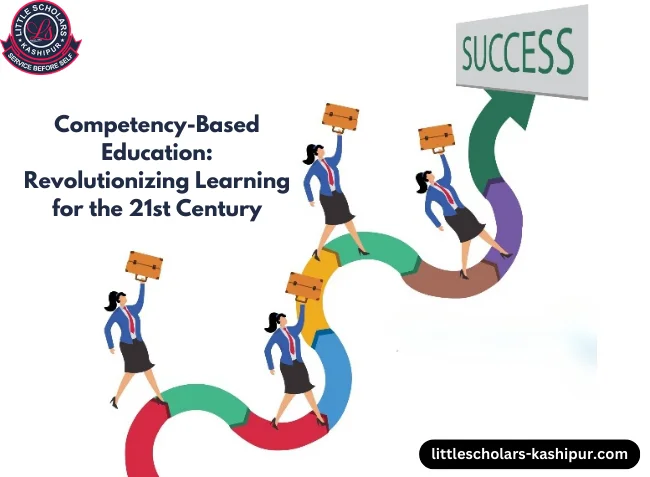Competency-Based Education (CBE) is a transformative approach to learning that prioritizes students' mastery of skills and knowledge over traditional time-based metrics. Unlike the conventional education system that measures progress through seat time and credit hours, CBE focuses on the actual acquisition and demonstration of competencies. This shift is crucial in preparing students for the dynamic demands of the 21st-century workforce.
The Core Principles of CBE
Mastery Over Seat Time
In CBE, students advance upon demonstrating mastery of a subject rather than spending a predetermined amount of time in class. This approach ensures that learners fully understand the material before moving on, promoting deeper and more effective learning.
Personalized Learning Paths
CBE allows for personalized learning experiences tailored to individual student needs, interests, and learning styles. This customization helps engage students more deeply, as they can learn at their own pace and follow paths that resonate with their goals.
Emphasis on Real-World Skills
The competencies targeted in CBE are often directly aligned with real-world applications, ensuring that students develop practical, applicable skills that are valued in the workplace. This focus makes education more relevant and meaningful.
How CBE Differs from Traditional Education
Focus on Learning Outcomes vs. Process
Traditional education often emphasizes the process of learning—attending classes, completing assignments, and passing exams within a set timeframe. In contrast, CBE centers on outcomes, requiring students to prove their knowledge and skills before advancing.
Unlocking the Power of Student Motivation: A Guide to Inspiring Academic Success: Read now
Flexibility in Pace and Learning Styles
CBE offers flexibility that traditional education does not. Students can move quickly through material they grasp easily and take additional time with challenging topics. This adaptability accommodates diverse learning styles and paces, fostering a more inclusive educational environment.
Advantages of CBE
Tailored Learning Experiences
One of the most significant advantages of CBE is its ability to provide tailored learning experiences. By focusing on individual progress and understanding, students receive a more personalized education that caters to their specific needs and aspirations.
Greater Student Engagement
When students have control over their learning pace and path, they are more likely to stay engaged and motivated. This increased engagement can lead to better retention of information and higher overall achievement.
Preparation for the Workforce
CBE’s emphasis on real-world skills directly prepares students for the workforce. By mastering competencies that are relevant to their future careers, students can transition more smoothly from education to employment, equipped with the skills employers are looking for.
Challenges in Implementing CBE
Assessment and Standardization
One of the significant challenges in CBE is developing effective assessments that accurately measure student competencies. Standardizing these assessments to ensure consistency and fairness across different institutions can also be complex.
Teacher Training and Adaptation
Implementing CBE requires a shift in teaching methods and mindset. Teachers must be trained to develop and assess competencies, provide personalized instruction, and utilize technology effectively. This transition can be demanding and resource-intensive.
Master Blended Learning: Your Path to Success Begins Here!: Read now
CBE in Different Educational Levels
Elementary and Secondary Education
At the elementary and secondary levels, CBE can help younger students develop foundational skills at their own pace, ensuring a solid understanding before advancing to more complex concepts. This approach can foster a love for learning early on.
Higher Education
In higher education, CBE can provide a more flexible and relevant curriculum that aligns closely with students’ career goals. Universities and colleges adopting CBE can better prepare students for the demands of their chosen professions.
Technology's Role in CBE
Online Platforms and Tools
Technology plays a crucial role in facilitating CBE. Online platforms and tools enable personalized learning experiences, providing students with access to resources, assessments, and feedback tailored to their needs.
Data Analytics for Personalized Learning
Data analytics can help educators track student progress and identify areas where additional support is needed. By analyzing data, teachers can provide targeted interventions and adjust learning paths to ensure each student achieves mastery.
CBE and Workforce Development
Aligning Education with Industry Needs
CBE aligns educational outcomes with industry needs, ensuring that students acquire the skills and knowledge that employers value. This alignment helps bridge the gap between education and employment, making graduates more competitive in the job market.
Lifelong Learning and Upskilling
CBE supports lifelong learning and upskilling, allowing individuals to continually develop new competencies throughout their careers. This approach is particularly valuable in a rapidly changing job market where ongoing education is essential.
Successful Examples of CBE
Case Studies from Schools and Universities
Several schools and universities have successfully implemented CBE, demonstrating its effectiveness. For instance, Western Governors University (WGU) in the United States offers competency-based programs that allow students to progress at their own pace, leading to higher satisfaction and success rates.
Future Trends in CBE
Micro-Credentials and Digital Badges
Micro-credentials and digital badges are emerging trends in CBE, providing learners with tangible proof of their competencies. These credentials can be shared with employers and added to digital portfolios, enhancing students' employability.
Global Adoption and Policy Changes
As the benefits of CBE become more apparent, its adoption is likely to grow globally. Policymakers and educational institutions worldwide are exploring ways to integrate CBE into their systems, promoting more effective and relevant learning experiences.
Exploring the Wonders of Biodiversity Hotspots: Preserving Nature's Treasures: Read now
Getting Started with CBE
Steps for Schools and Educators
To get started with CBE, schools, and educators should begin by defining clear competencies and developing assessments to measure them. Training teachers and investing in the necessary technology are also crucial steps in the transition.
Resources and Tools Available
Numerous resources and tools are available to support the implementation of CBE. Online platforms, professional development programs, and collaborative networks can provide valuable guidance and support.
Conclusion
Competency-based education represents a significant shift in how we approach learning, emphasizing mastery, personalization, and real-world skills. While challenges exist, the benefits of CBE for students, educators, and employers make it a promising model for the future of education.




